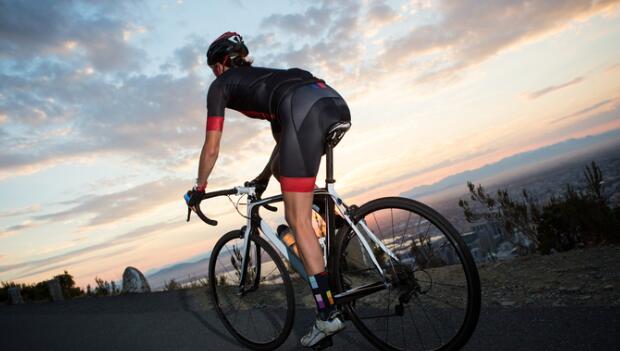
You've ridden some centuries, but how far can you ride? A 200K (124 miles)? A double century (200 miles)? That's how I got hooked into ultra-distance riding and I kept pushing my limits until I completed the Race Across America.
Here's what I've learned as a cyclist and coach about training for and riding events from 200K to 200 miles. You can also apply these tips to longer ultra-rides.
More: Video: How to Prepare for an Ultra-Distance Event
Ramp Up Correctly
You should train up to a ride of two-thirds to three-fourths the duration of the planned event. Your speed for a double century will be slower than for 100 miles because of the cumulative fatigue. If you can ride a comparably hilly century in seven hours, then your first double century will probably take 16 hours or more. You should build up to a peak training ride of 11 to 12 hours.
When you train for a century you probably ramp up with a longer ride each week, 3 hours, 3.5 hours, 4 hours, 4.5 hours, 5 hours, etc. This ramping pattern will also work for a 200K.
However, when training for a double century, if you ramp up the duration of your rides every weekend you may have a hard time recovering physically and mentally from one weekend to the next. Once you are fit for a century follow a see-saw pattern from weekend to weekend: 7 hours, 2 hours, 8 hours, 2.5 hours, 9 hours, 3 hours, 10 hours, 3.5 hours, 11 hours, 4 hours.
Ride the longer weekend rides (7:00, 8:00, etc.) at the pace at which you expect to ride the second half of your double century. This will help you dial in your pacing.
Ride the shorter weekend rides at a brisker pace than you'll be riding the double to build your cruising speed.
More: 10 Training Fundamentals for Cyclists
Train by Time
Train by time rather than miles because how far you ride in X hours will depend on how hilly the course is, whether it's windy, if you are riding with a good group and other factors.
More: Preparing for a Hilly Century
Include Intensity
Every week, include an intensity ride during the week to build power. Warm up, do a mixed intensity workout and then cool down. The mixed intensity portion should include very hard riding and easier recovery spinning. You can do structured intervals, hill repeats or just sprint with friends to different points on the ride. During the weeks with the shorter weekend rides, you can add a second intensity ride.
More: The Science Behind Mixing Training Intensity
- 1
- of
- 3








Discuss This Article